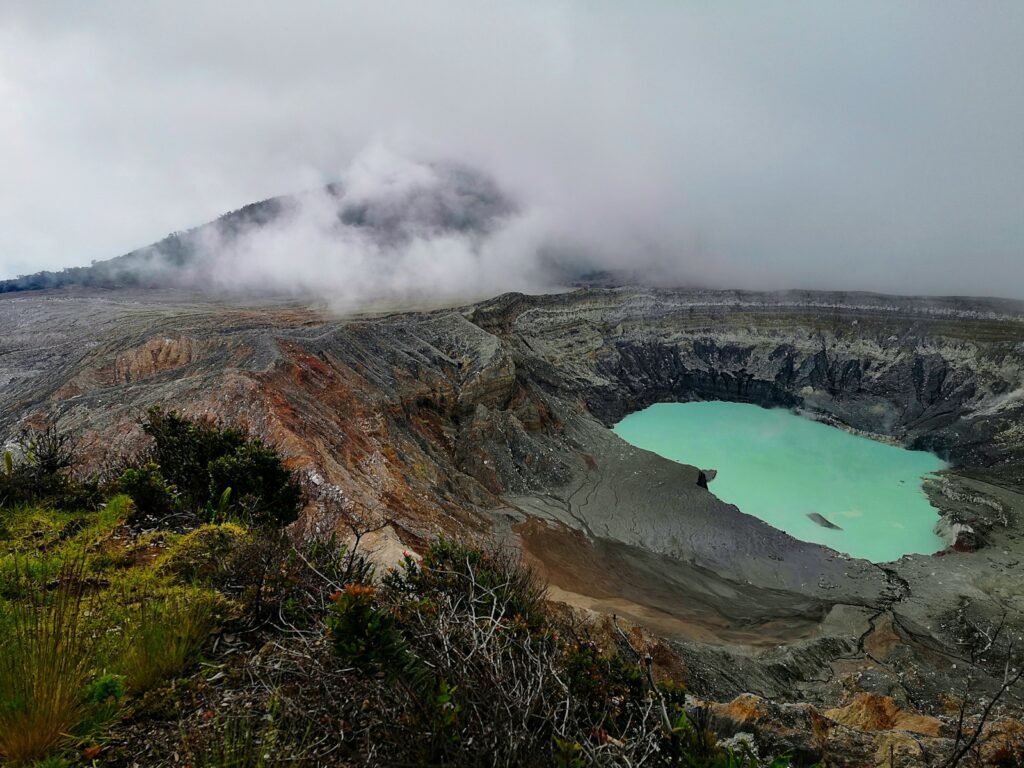Picture this: you’re hiking through the American wilderness when suddenly you stumble upon a massive, perfectly round crater stretching for miles. Your first thought? “A meteor must have slammed into Earth here millions of years ago!” But hold on – Mother Nature has been playing tricks on us for centuries, creating formations that look exactly like cosmic impacts but have completely different, often more fascinating origins.
The Great Deception of Volcanic Calderas

When volcanoes explode with unimaginable force, they don’t just spew lava everywhere – they literally collapse in on themselves, creating enormous circular depressions called calderas. These geological giants can stretch for dozens of miles and look remarkably similar to meteor impact craters from above. The key difference lies in their formation: while meteors punch holes into the Earth from the outside, volcanic calderas are created when underground magma chambers empty out and the ground above simply caves in. Think of it like a giant underground balloon deflating, causing the surface to sink into a bowl shape. What makes this even more mind-bending is that some calderas are so massive that you could stand in the middle of one and never realize you’re inside a volcanic crater.
Yellowstone’s Hidden Giant

The Yellowstone Caldera spans an incredible 34 by 45 miles, making it one of the largest volcanic features in North America, yet most visitors never realize they’re standing inside a supervolcano’s crater. This massive depression was formed around 640,000 years ago when the Yellowstone supervolcano erupted with a force thousands of times greater than Mount St. Helens. The explosion was so violent that it ejected over 240 cubic miles of rock and ash, creating a depression that’s now filled with forests, geysers, and wildlife. From a satellite view, the caldera’s rim is clearly visible as a curved line of mountains and ridges. What’s truly shocking is that this “crater” is still very much alive – the ground rises and falls by several inches each year as magma moves beneath the surface.
Long Valley’s Deceptive Beauty
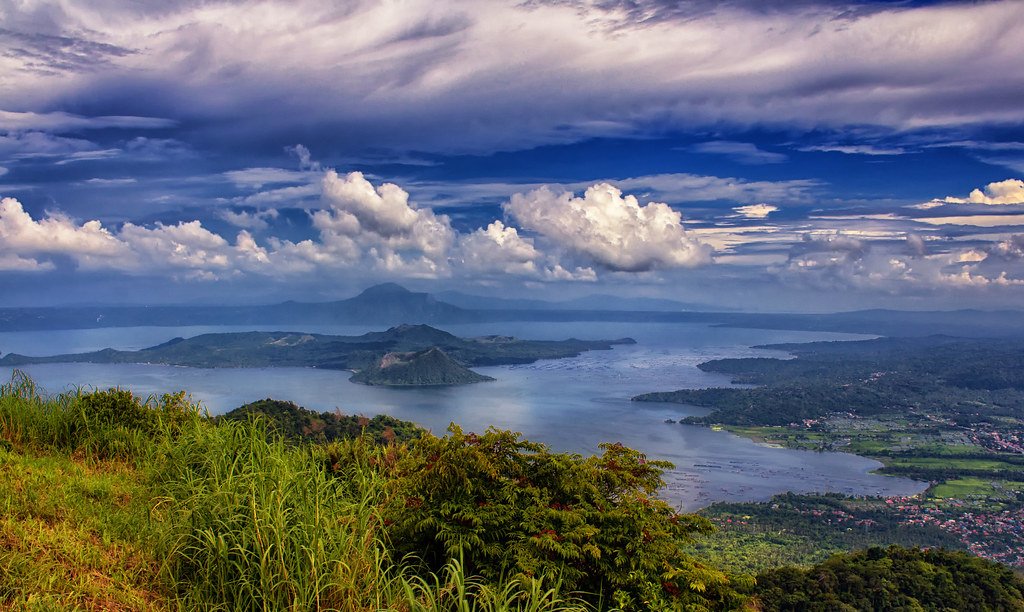
Nestled in California’s Sierra Nevada mountains, Long Valley Caldera stretches 20 miles long and 11 miles wide, creating a stunning oval depression that could easily fool anyone into thinking it’s an ancient meteor impact site. This geological marvel was born 760,000 years ago during one of the most explosive volcanic eruptions in Earth’s recent history. The eruption was so powerful that it scattered ash as far as Nebraska and created the beautiful Mammoth Mountain that skiers know and love today. The caldera floor sits about 3,000 feet below the surrounding peaks, creating a natural bowl that’s now home to hot springs, fumaroles, and some of the most pristine wilderness in California. What makes Long Valley particularly fascinating is that it’s still considered an active volcanic system, with underground magma continuing to heat the area’s famous hot springs.
Mount Mazama’s Spectacular Transformation

Crater Lake in Oregon represents one of the most perfect examples of how volcanic calderas can masquerade as meteor craters. About 7,700 years ago, Mount Mazama literally blew its top in a catastrophic eruption that was witnessed by Native American tribes in the area. The mountain collapsed into its own magma chamber, creating a caldera that’s now filled with some of the deepest and clearest water in the world. The lake reaches depths of nearly 2,000 feet and is fed entirely by snowmelt and rain, giving it an otherworldly blue color that seems almost artificial. From the rim, looking down into the perfectly circular lake, it’s easy to imagine a massive space rock creating this geological wonder. The Native American Klamath tribe has legends about this event, describing a great battle between the spirits of the sky and the underworld that resulted in the mountain’s collapse.
The Mysterious World of Salt Domes

Salt domes create some of the most convincing fake meteor craters in the United States, and their formation process is surprisingly similar to how a lava lamp works. Deep underground, ancient salt deposits are less dense than the rock above them, so over millions of years, they slowly rise upward like giant underground bubbles. When these salt formations reach the surface, they can create circular depressions, raised rims, and even central peaks that look exactly like impact craters. The salt often dissolves away over time, leaving behind a perfectly round hole in the ground surrounded by disturbed rock layers. What makes salt domes particularly tricky to identify is that they can span several miles in diameter and often contain minerals and rock formations that have been dramatically altered by the salt’s movement. Some of these formations are so convincing that early geologists spent decades debating whether they were volcanic, meteoric, or something else entirely.
Upheaval Dome’s Geological Puzzle

Located in Utah’s Canyonlands National Park, Upheaval Dome has been the subject of intense scientific debate for over a century. This 3-mile-wide circular structure features a raised central area surrounded by concentric rings of upturned rock layers, creating a formation that looks exactly like what you’d expect from a meteor impact. For decades, geologists argued whether this was indeed an ancient impact crater or the result of a salt dome pushing up from below. The evidence eventually pointed to a salt dome origin, but the formation is so perfectly crater-like that many visitors still assume it was created by a cosmic collision. What makes Upheaval Dome particularly striking is how clearly you can see the rock layers that have been bent and twisted by the underground salt movement. The colorful bands of red, white, and green rock create a natural amphitheater that demonstrates the incredible forces at work beneath our feet.
The Deceptive Power of Erosion

Sometimes nature creates crater-like formations through nothing more dramatic than water, wind, and time. Certain types of rock formations, particularly those with alternating hard and soft layers, can erode in patterns that create almost perfect circular depressions. The process works like this: water finds a weak spot in the rock and begins to carve out a small depression, then as the depression grows, it catches more water, which accelerates the erosion process in a self-reinforcing cycle. Over millions of years, this can create circular basins that are virtually indistinguishable from impact craters. The really mind-bending part is that some of these erosional features even develop the raised rims and central peaks that are characteristic of meteor impacts. These formations are particularly common in areas with sedimentary rock layers, where different types of stone weather at different rates.
Richat Structure’s African Twin in America

While the famous Richat Structure in Africa gets all the attention as the “Eye of the Sahara,” the United States has its own version of these mysterious circular geological formations. In parts of the American Southwest, similar concentric ring structures have formed through a combination of erosion and geological uplift. These formations start as small domes of rock that are pushed upward by geological forces, then erosion carves away the softer rock layers, leaving behind the harder layers as concentric rings. The result is a series of perfectly circular ridges that look like a giant bullseye when viewed from above. What makes these formations particularly fascinating is that they can span dozens of miles in diameter, yet maintain their circular shape with remarkable precision. The process that creates them is so slow and gradual that the rings can maintain their shape even as the landscape around them changes dramatically over millions of years.
Glacial Kettles and Ice Age Deceptions

During the last ice age, massive glaciers carved and shaped the American landscape in ways that continue to fool us today. One of the most common glacier-created features that resembles a meteor crater is called a kettle lake or kettle hole. These form when a chunk of glacial ice gets buried under sediment, then melts over time, causing the ground above to collapse into a circular depression. Some of these kettles can be enormous – several miles across – and when they’re not filled with water, they look remarkably similar to impact craters. The Great Lakes region is peppered with thousands of these formations, ranging from small ponds to massive depressions that could easily be mistaken for cosmic impacts. What makes kettles particularly convincing as fake meteor craters is that they often have raised rims made of the sediment that was pushed up when the ice melted. Some kettles even have multiple rings, created when ice chunks of different sizes melted at different rates.
The Role of Underground Explosions

Not all crater-like formations come from space or slow geological processes – sometimes they’re created by violent underground explosions that have nothing to do with meteors. These can be caused by natural gas buildups, underground coal fires, or even large deposits of organic matter that suddenly combust. When these underground explosions occur, they can blast out circular craters that are virtually identical to meteor impacts, complete with shocked rock, glass formations, and debris fields. The most famous example of this type of formation is the Tunguska event in Russia, but similar smaller-scale explosions have created crater-like features across the United States. What makes these particularly tricky to identify is that the explosion can create many of the same geological signatures as a meteor impact, including fractured bedrock and unusual mineral formations. Some of these explosion craters are so convincing that they’ve fooled scientists for years before their true origin was discovered.
Limestone Sinkholes: Nature’s Trapdoors
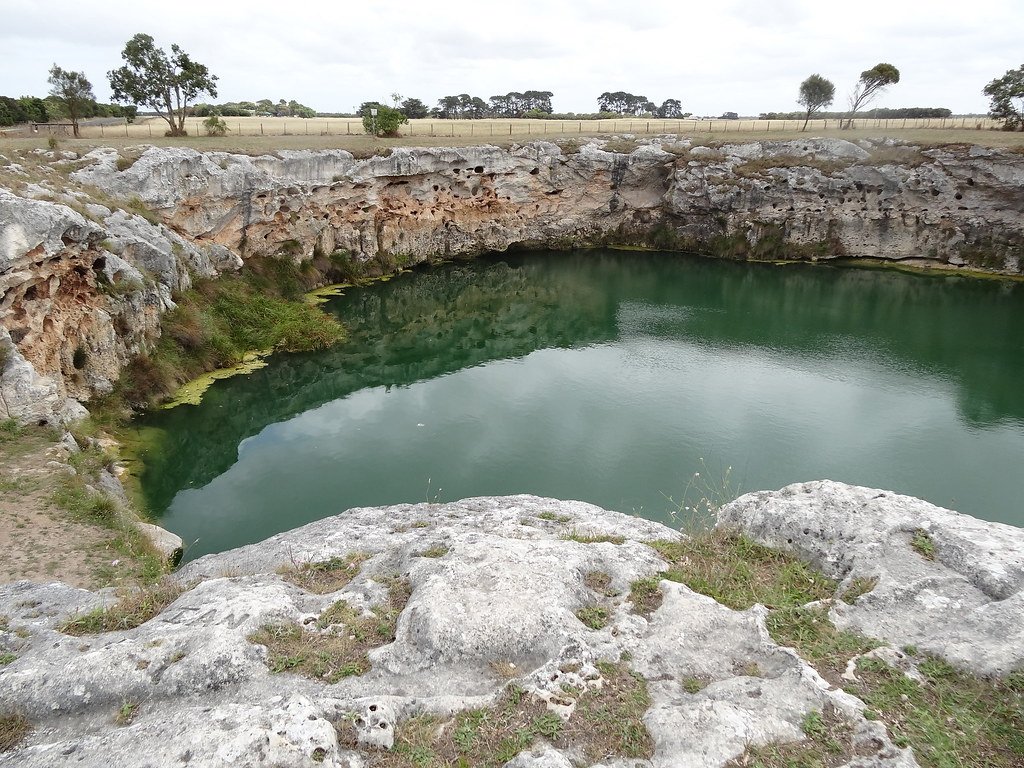
Florida and other limestone-rich regions are famous for their sinkholes, but what many people don’t realize is that some of these can grow to enormous sizes and create formations that look exactly like meteor impact craters. Sinkholes form when underground limestone dissolves away, creating vast caverns that eventually collapse, leaving behind circular depressions in the surface. The largest sinkholes can span several miles and reach depths of hundreds of feet, creating dramatic circular basins with steep walls. What makes sinkholes particularly convincing as fake impact craters is that they often form very quickly – sometimes overnight – which gives them the appearance of having been created by a sudden, violent event. The Devil’s Millhopper in Florida is a perfect example of a large sinkhole that could easily be mistaken for a small meteor crater, complete with steep walls and a debris-filled bottom that looks like impact breccia.
Ancient Riverbends and Oxbow Mysteries

Rivers have been carving circular and semi-circular formations into the American landscape for millions of years, and some of these ancient waterways have left behind crater-like depressions that can fool even experienced geologists. When rivers change course over time, they often leave behind oxbow lakes – curved, circular bodies of water that mark where the river used to flow. Over geological time, these oxbow lakes can drain, leaving behind perfectly circular depressions in the landscape. Some ancient river systems created multiple oxbow formations in close proximity, resulting in complex patterns of circular depressions that can look like multiple meteor impacts. The Mississippi River system has created thousands of these formations over millions of years, and many of them are now buried under sediment or hidden by vegetation, making them even more mysterious. What’s particularly fascinating is that some of these ancient river formations are so old that they predate human civilization by millions of years, creating geological puzzles that scientists are still working to understand.
Collapsed Underground Mines and Human-Made Craters

America’s industrial history has left behind numerous circular depressions that can easily be mistaken for natural meteor craters, especially as vegetation reclaims these abandoned sites. Underground coal mines, salt mines, and other extraction operations often create large caverns that eventually collapse, forming circular sinkholes at the surface. These human-made craters can span several hundred feet in diameter and reach depths of over 100 feet, making them substantial geological features in their own right. What makes these particularly interesting is that many of them are located in remote areas where the original mining operations have been forgotten, leaving behind mysterious circular holes with no obvious explanation. The Centralia mine fire in Pennsylvania has created numerous crater-like formations as the underground coal continues to burn and the surface collapses into the void below. Some of these mining-related craters are so old that they’ve begun to look completely natural, with trees growing on their slopes and wildlife making homes in their depths.
Tectonic Uplift and Circular Mountain Ranges

Sometimes the Earth’s crust pushes upward in circular patterns, creating ring-shaped mountain ranges that surround central valleys in formations that look exactly like giant impact craters. These structures, called ring dikes or circular intrusions, form when magma pushes up through the Earth’s crust in a circular pattern, lifting the surface rock into a ring shape. Over millions of years, erosion can wear away the central area faster than the harder ring of uplifted rock, creating a circular valley surrounded by mountains. The Black Hills of South Dakota show elements of this type of formation, where a circular uplift has created a ring of higher terrain surrounding a central area. What makes these formations particularly convincing as fake meteor craters is their enormous size – some span over 100 miles in diameter – and their perfectly circular shape when viewed from space. The geological processes that create these formations are so slow and gradual that they can maintain their circular symmetry even as the landscape around them changes dramatically.
Seasonal Lakes and Playa Formations

In the arid regions of the American West, seasonal lakes called playas create some of the most perfect circular formations you’ll ever see, and when they’re dry, they can look exactly like meteor impact craters from above. Playas form in low-lying areas where water collects during rainy seasons, then evaporates during dry periods, leaving behind flat, circular salt flats. Over thousands of years, wind and water action can carve these playas into deeper and more defined circular basins, complete with raised rims made of accumulated sediment. The really fascinating thing about playas is that they can change dramatically with the seasons – what looks like a mysterious crater during dry periods becomes a beautiful lake during wet years. Some of the largest playas in Nevada and California span several miles in diameter and are so perfectly circular that early aerial photographers thought they had discovered ancient meteor impact sites. The salt and mineral deposits left behind by evaporating playa lakes can even create the kind of unusual rock formations that are typically associated with meteor impacts.
Submarine Volcanoes and Underwater Mysteries
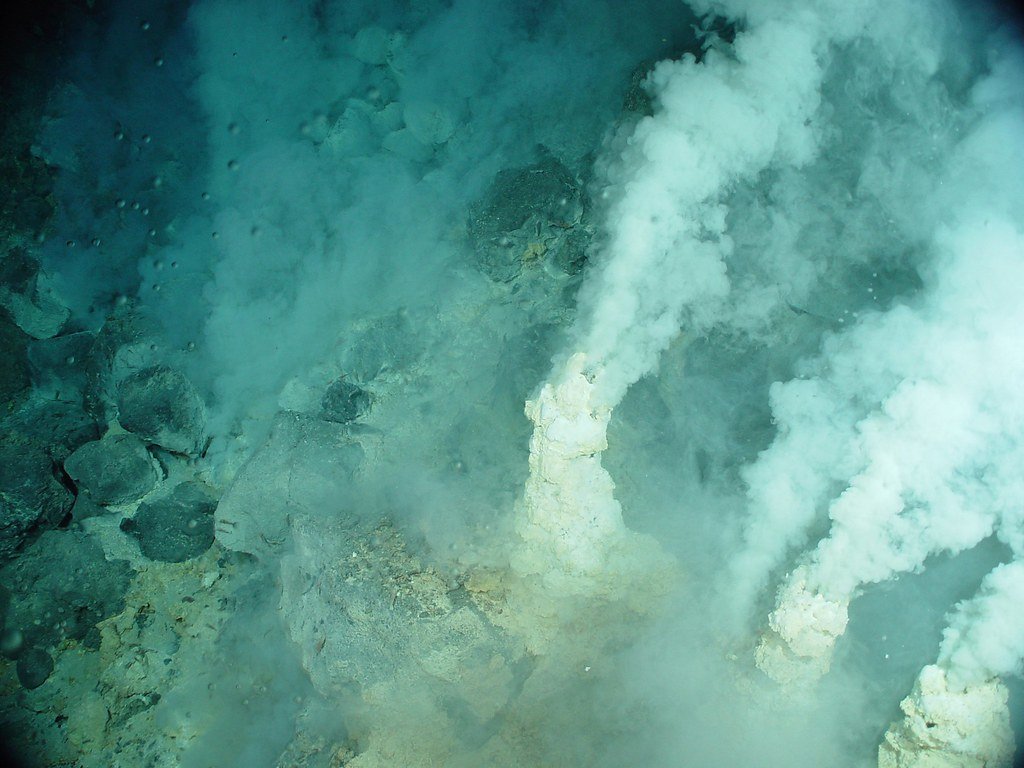
Not all volcanic calderas are on dry land – some of America’s most impressive crater-like formations are hidden beneath lakes and coastal waters, created by ancient submarine volcanoes that are now submerged. Lake Tahoe, for example, sits partially within a volcanic caldera system that was active millions of years ago, and the lake’s unusual depth and circular shape reflect this volcanic origin. These underwater calderas can be enormous, sometimes spanning dozens of miles, but they’re often mistaken for meteor impact craters because their circular shape is so clearly visible in sonar maps and satellite imagery. What makes submarine calderas particularly mysterious is that they’re much harder to study than their land-based counterparts, so scientists often have to make educated guesses about their formation and history. The Yellowstone Lake caldera system extends underwater, creating a complex network of volcanic features that are still being discovered and mapped by researchers using advanced sonar technology.
The Future of Crater Detection

As satellite technology and geological surveying techniques continue to improve, scientists are discovering that many formations they once thought were meteor impact craters are actually something completely different. Advanced ground-penetrating radar, detailed mineral analysis, and computer modeling are revealing the true origins of mysterious circular formations across the United States. This ongoing research is not only helping us understand our planet’s geological history better, but it’s also teaching us important lessons about how to identify real meteor impact sites on other planets. The techniques developed to distinguish between impact craters and volcanic calderas on Earth are now being used to study similar formations on Mars and the Moon. What’s particularly exciting is that new crater-like formations are still being discovered, often in remote areas that have never been thoroughly surveyed, meaning there are likely dozens more of these geological mysteries waiting to be found and explained.
Why These Geological Impostors Matter
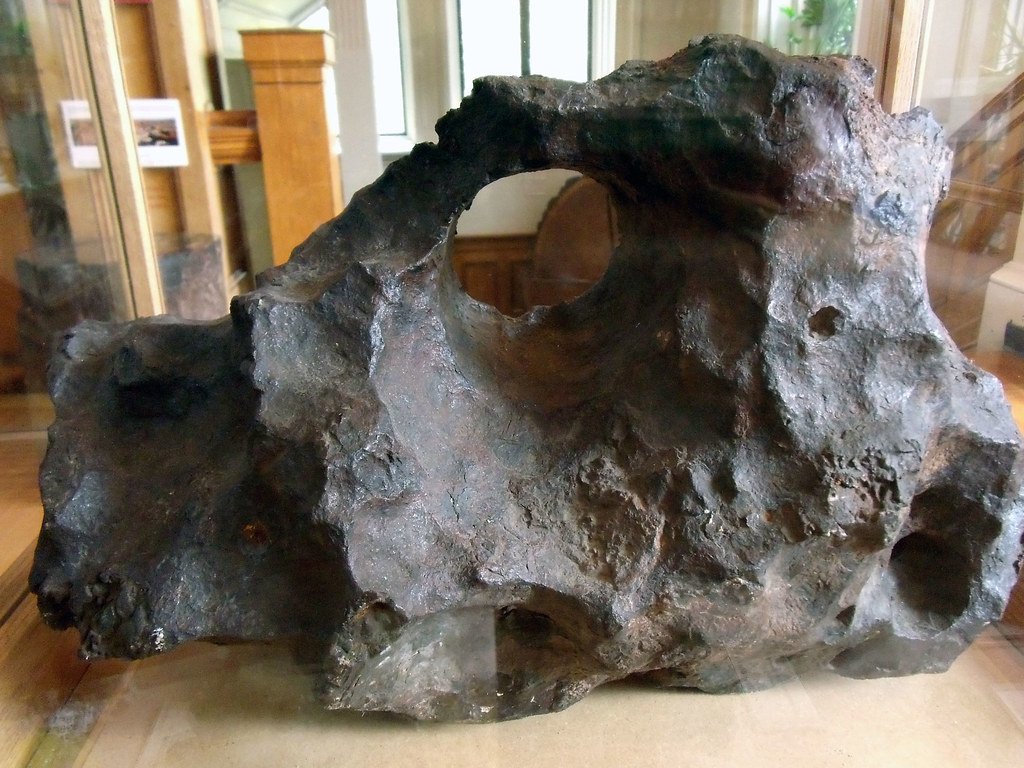
Understanding the difference between real meteor craters and their geological look-alikes isn’t just academic curiosity – it has real implications for everything from natural resource exploration to planetary defense. Many of these crater-like formations contain valuable minerals, oil deposits, or geothermal energy sources that formed during their creation. Volcanic calderas often indicate the presence of geothermal activity that could be harnessed for clean energy, while salt domes frequently contain oil and gas deposits. Additionally, studying these formations helps scientists better understand the geological processes that shape our planet, knowledge that’s crucial for predicting natural disasters and understanding climate change. Perhaps most importantly, learning to distinguish between different types of crater-like formations helps us better identify and study real meteor impact sites, which provide crucial information about the cosmic threats that Earth faces and the frequency with which large objects strike our planet.
The next time you’re looking at satellite images or hiking through the American wilderness and spot a suspicious circular formation, remember that the Earth has been playing cosmic tricks on us for millions of years. What looks like evidence of an ancient space rock collision might actually be the result of underground salt bubbles, collapsed volcanoes, or even something as simple as an old river changing course. Isn’t it amazing how many ways our planet can fool us into seeing meteor impacts where none exist?

